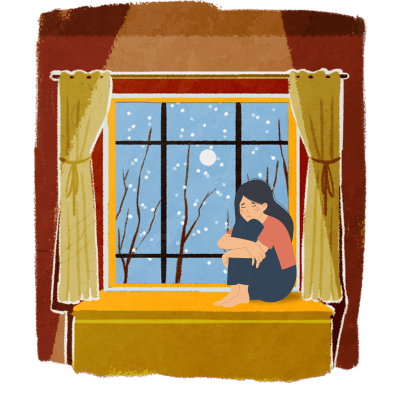
Tips for Navigating Fall and Winter Blues
As the weather gets cooler and the days become shorter, many of us begin to notice a shift in our mood and energy levels. This can be more than just the effects of changing weather; it might be Seasonal Affective Disorder (SAD), a form of depression that typically surfaces during the fall and winter months. FPC Therapist Pamela Villatoro, MHC shared some insights into how to navigate through the changing seasons:
Understanding SAD
Common symptoms include persistent feelings of sadness, changes in sleep and difficulty concentrating. You might also experience increased irritability, changes in appetite, or a general sense of hopelessness. Much like how animals adjust to the changing seasons, we too experience shifts in our mental and physical well-being. Understanding that these changes are a natural response to seasonal shifts can help us recognize that there’s nothing to be ashamed of. We can can take proactive steps to support our well-being and help ourselves work through the challenge.
Prioritize Natural Light
Shorter days mean less sunlight, which can affect your mood. Try to get outside during the day or look into purchasing light box that mimics sunlight. Even if your time outside is just a few minutes, it will have a positive affect on your mood.
Stay Active
Exercise is a great way to boost your mood and energy due to the release of “feel-good” chemicals in the brain. Whether it’s a walk, a workout, or a yoga session, try to keep moving.
Connect with Others
Spending time with friends and family can help you feel better. Reach out to loved ones, join a support group, or find local events to stay connected and combat feelings of loneliness.
Practice Self-Care
Engage in activities that bring you joy and help you unwind. Whether it’s diving into a favorite book, enjoying a hobby, or practicing mindfulness through meditation or deep-breathing exercises, small acts of self-care can make a big difference.
Stay Engaged with Your Therapy
Continue to actively participate in therapy sessions. You can use sessions to discuss how the changing seasons are affecting you and explore coping strategies with your therapist. Regular check-ins can help you stay on track with your mental health goals and provide additional support during the seasonal blues.
Just as animals adapt their behaviors and routines to the changing seasons, we can also make adjustments to support our well-being. By incorporating self-care strategies and being mindful of our needs, we can better manage the challenges of fall and winter and support our mental health all year round.


